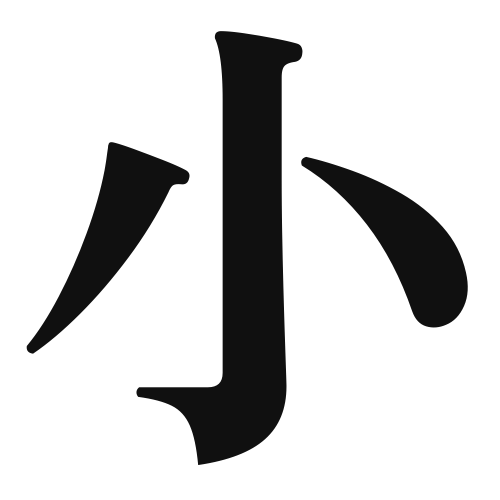1. Overview of Meaning
The kanji “小” (shō) means “small” or “little.” It is used to describe size, quantity, or age, often conveying a sense of something being minor or insignificant.
2. Formation and Radical
Formation of the Kanji: The kanji “小” is a pictogram that represents a small object. It visually resembles a small figure or a compact shape, emphasizing its meaning of smallness.
Radical: The radical for “小” is also “小,” which is used in various kanji to denote smallness or diminutiveness.
3. Examples of Usage
Common Words and Phrases: Some frequently used words that include “小” are:
- 小さい (chiisai) – small
- 小学校 (shōgakkō) – elementary school
- 小説 (shōsetsu) – novel
Example Sentences in Daily Conversation:
- この犬はとても小さいです。 (Kono inu wa totemo chiisai desu.) – This dog is very small.
- 私は小学校に通っていました。 (Watashi wa shōgakkō ni kayotte imashita.) – I attended elementary school.
4. Synonyms and Antonyms
Similar Kanji: A kanji with a similar meaning is “微” (bi), which means “tiny” or “minute,” but it often conveys a more delicate or subtle sense of smallness.
Opposite Kanji: The kanji “大” (dai) means “big” or “large,” representing the opposite concept of size compared to “小.”
5. Cultural and Historical Background
Relation to Japanese Culture: The concept of smallness is often appreciated in Japanese culture, where simplicity and minimalism are valued. Small objects, such as traditional crafts, are celebrated for their intricate details.
Proverbs and Idioms: An example of a proverb that includes “小” is “小さなことからコツコツと” (Chiisana koto kara kotsukotsu to), which means “little by little from small things,” emphasizing the importance of starting small to achieve greater goals.
